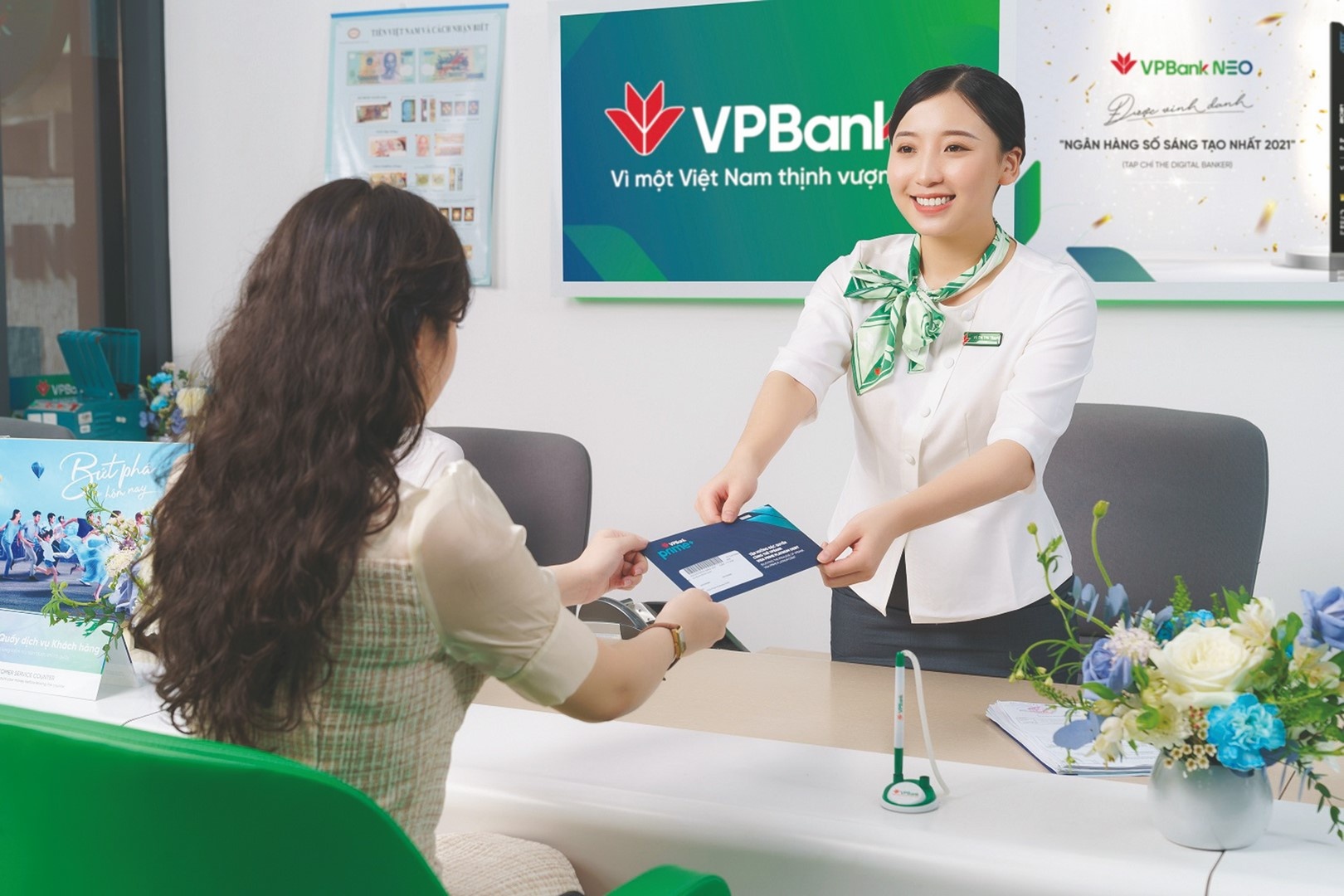Relying on traditional banks
Cake by VPBank – a digital bank with no branches or transaction offices – is the result of a collaboration between Be Group, the owner and developer of the Be ride-hailing app, and VPBank. Cake offers banking products and services, allowing customers to conduct all transactions such as opening bank accounts, sending and receiving money online, etc., without needing to visit a branch. Users can open accounts via mobile phone using a phone number standardized by the Ministry of Information and Communications , and the electronic customer identification system will help customers process contracts using digital signatures.
Launched in January 2021, as of March 2023, this digital bank had nearly 3 million customers, with transaction value reaching approximately 62,000 billion VND, and savings deposits alone exceeding 3,000 billion VND. This figure does not include the added value it brings to the Be ride-hailing ecosystem of its parent company. Cake is currently expanding its consumer lending operations beyond the Be Group ecosystem and has received funding from foreign investors.
 |
| Experts recommend establishing a legal framework for digital banking to ensure fairness for all market participants. |
Another example is Timo, a digital bank owned by Vinacapital Group, currently collaborating with Ban Viet Commercial Bank to operate under the new name Timo Plus. Timo Plus's main products include debit cards, credit cards, money transfers via email, online savings, and investment through fund certificates. Similarly, TNEX is a digital bank with independent legal status, also operating under the guarantee of its partner MSB, primarily handling payment transactions and some consumer lending activities.
In fact, although they are partners with digital banks, VPBank , Ban Viet Bank, MSB, etc., also operate their own digital banks, such as VPBank NEO, Ban Viet Bank has Digimi, and so on.
So, currently, commercial banks operate using a traditional model, combined with digital transformation to provide products and services on technology platforms such as Internet Banking, Mobile Banking, Live Banking, etc.
A legal framework is needed.
According to Mr. Hoang Cong Gia Khanh from the University of Economics and Law, Vietnam National University Ho Chi Minh City, digital banking involves the provision, distribution, and sale of financial products and services through digital channels.
Let's look at Grab's story. From a ride-hailing app, the company has expanded into a multi-service intermediary, and in that business chain, they needed a digital bank to meet the payment needs of buyers and sellers. In this context, Singapore was the first country in the region to grant an operating license to GXS Bank, a digital bank owned by Grab and Singtel, with the immediate goal of serving members within the two corporations' ecosystems, and later expanding to provide loans to customers below the standard of traditional banks.
In Vietnam, the government has also tasked the State Bank of Vietnam with researching and developing a pilot management mechanism for new business models to encourage innovation in the financial sector. However, to date, Vietnam lacks a truly clear, complete, and comprehensive legal framework for financial technology, aside from individual regulations or policy responses for a few areas such as e-wallets, payments, and mobile money.
Although fintech is attracting significant attention in Vietnam, it is primarily focused on three main services: payments, peer-to-peer lending, and crowdfunding. Peer-to-peer lending emerged in Vietnam in 2014 with the HuyDong platform, which specialized in providing loans to businesses. In 2015, the Tima platform was launched and is considered Vietnam's first peer-to-peer lending system. Subsequently, peer-to-peer lending companies proliferated in the market.
Peer-to-peer lending companies are not part of the credit institution system and are therefore not regulated by the Law on Credit Institutions. However, their lending activities are essentially credit granting. Therefore, in the event of a dispute, the Law on Credit Institutions cannot be referenced, leading to legal risks for borrowers. Some peer-to-peer lending companies register their business activities as financial consulting and brokerage, and self-promote; these companies provide services connecting investors and borrowers. Currently, Vietnamese law does not have regulations on peer-to-peer lending activities. When establishing credit agreements, peer-to-peer lending companies use third-party services, creating many difficulties for state management of this activity.
Given these challenges, it is clear that building a comprehensive legal system, starting with a pilot legal framework for the development of financial technology, is an urgent need. Mr. Hoang Cong Gia Khanh believes that the experience of other countries in building new legal frameworks requires a balance between two objectives: promoting innovation and creating a level playing field, ensuring the stability of the financial market, minimizing risks, and protecting customers. Ideally, this would create an open and highly reliable environment – and Vietnam naturally needs to follow this trend.
According to Mr. Khanh, the overall goal of building a legal framework for financial technology must ensure that it serves the core objectives of financial market development in the digital economy, namely financial inclusion, financial stability, financial integrity, and consumer protection. Therefore, it is necessary to adhere to the following 10 basic principles: (1) Support the transformation of financial technology, (2) ensure the encouragement of innovation in financial services, (3) eliminate overlapping regulations between legal documents, (4) establish regulations for financial technology at the national level, (5) build policies to encourage financial service businesses to protect consumers, (6) establish neutral rules of technology, (7) encourage a level playing field between existing and new businesses, (8) promote cybersecurity for financial technologies, (9) support the development of financial data standards and interoperability, (10) align with international practices in the financial services sector.
Source







![[Photo] Prime Minister Pham Minh Chinh attends the Conference on the Implementation of Tasks for 2026 of the Industry and Trade Sector](/_next/image?url=https%3A%2F%2Fvphoto.vietnam.vn%2Fthumb%2F1200x675%2Fvietnam%2Fresource%2FIMAGE%2F2025%2F12%2F19%2F1766159500458_ndo_br_shared31-jpg.webp&w=3840&q=75)






























































































Comment (0)